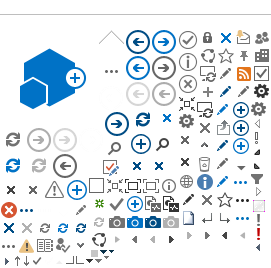What We've Found
Well-designed
displays can attract attention at conferences, shopping malls, libraries or
outdoor events. As such, they provide an excellent venue for sharing
information, educating and involving citizens, promoting helpful actions,
creating linkages and building general awareness. Best of all, once created,
they can be grabbed at a moment’s notice to be used again and again, with no
additional production costs.
Just the Facts
Displays can be anything from a simple folding poster board to
computer-based displays to elaborate walk-in booths. The information on a
display usually includes text,
photographs
and maps. The text should not try and cover every detail about a group, program
or project. People are predominately attracted to visual information; so, in
this case, a picture is definitely worth a thousand words. Select professional
images that are eye-catching and make use of creative headlines for text. No
matter where your display is set up, there will be visual competition for
people’s attention, so make it fun and innovative.
Because, ideally, displays will be used many times, they should be
portable. They also need to be large enough to attract people. Size and
transportation requirements need to be taken into consideration when designing a
display.
Points to consider:
- Have materials such as brochure
or card that people can take away for more information.
- If there is something fun that kids are attracted to, adults will
follow.
- Determine if the display needs to have a person there to explain,
demonstrate or answer questions, or if it will be self-explanatory.
- Higher-end displays can include computer simulations and videos.
How To Do It
1. Make a
MessageDecide what is the one message, or theme, you want to
communicate and who is your most important audiences. The message must be
something simple enough that anyone just passing by and looking at your display
will be able to understand. Once you have a message, select images that support
it. Remember, it is better to have a few large graphics and titles than a lot of
information. A logo is one of the most effective ways to give identity to your
effort, so make it a dominant feature on your display. Be sure any supplemental
information you will have available to distribute also uses the same
logo.
2. Don't Skimp on DesignKeep in mind that
printing needs to be legible and photographs and maps recognizable from several
feet away. You probably should consider soliciting professional help to design
and produce the final product. There are several portable display units
available commercially. Trade show companies can also build displays to
specifications for a much higher cost.
3. Decide Where It will be Used
- Research regional fairs and festivals to determine if the audience who
attends are people you need to reach.
- Contact the local community center, town hall or library to see if they will
permit you to post a display in their lobby. Same with an area shopping
mall.
- If you are an invited guest speaker at a conference, ask the conference
organizers if there is an exhibit hall or a designated area to set up a display.
Definition
Information relating
to a group, program or project is presented in a large, eye-catching
format.
Use It If...
- You are trying to increase visibility and want to reach people who may have
never heard of your cause.
- You have several opportunities to share your message at festivals, in a
public building or at conferences.
Forget It If...
- You do not have the budget to professionally produce a display or the
in-house knowledge of graphics and design.
- You cannot identify opportunities to use a display.
- You do not have the human resources to send someone to set up and tend the
display nor the economic resources to cover transportation costs.
Timing is Everything
Displays
work effectively at the beginning of a project to help establish the identity of
a group.
Examples
